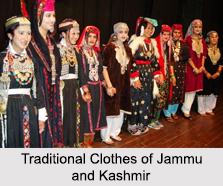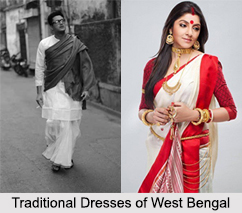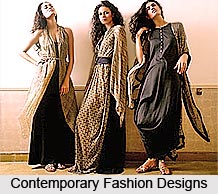 Contemporary Fashion Designs in India are the contemporary fashion fiesta the graphic fabrics, the visual orientations and the intricacy of patterns. Fashion is a term used in relation to the latest and the most admired style in clothes, dresses, garments, textiles, cosmetics, etc. Fashion designers playfully deal with colours and fabrics.
Contemporary Fashion Designs in India are the contemporary fashion fiesta the graphic fabrics, the visual orientations and the intricacy of patterns. Fashion is a term used in relation to the latest and the most admired style in clothes, dresses, garments, textiles, cosmetics, etc. Fashion designers playfully deal with colours and fabrics.
Fashion design is not restricted to fads, which is generally known as the current look or street wear. It covers everything from uniforms to headwear and is not restricted to western culture. Technically all clothing created for a purpose is fashion design. Fashion design dictates changes in clothing over time. It is often and wrongly perceived that fashion design is restricted to high fashion and label names. Fashion Design grew from serving a practical purpose to a recognized form of art.
Features of Contemporary Fashion Designs in India
The seamless reconciliation of contradictions in the evolving contemporary aesthetics influencing the works of Indian fashion designers thrive to be the key notes to the success story behind Indian Fashion designs and trends. Coexistence of tradition and modernity, maxima and minimalism, hi-tech and primeval processes in almost equal measure reflect demolition of western monopoly on fashion aesthetics and growing influence of the unfading allure of home-grown patterns and techniques. Of the many worthy names in the globalised era, the apparel and accessory segment in India, like many other traditional product segments, is undergoing an astounding change of perception.
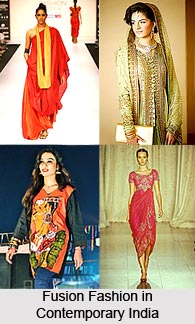 While it continues to enjoy the position of being an enhancer of beauty, the new-age consumer perceives fashion as a must, manifesting the wearer`s attitude, personality and lifestyle. Fashion is now an important new sales driver in India, and domestic and international brands are scrambling to adjust their designs to cater to the Indian market. A host of variables - the buying occasion, the wearing occasion, the economic strata of the target segment and the effect of regional and religious influences on all of them are now being juggled to find the winning mix.
While it continues to enjoy the position of being an enhancer of beauty, the new-age consumer perceives fashion as a must, manifesting the wearer`s attitude, personality and lifestyle. Fashion is now an important new sales driver in India, and domestic and international brands are scrambling to adjust their designs to cater to the Indian market. A host of variables - the buying occasion, the wearing occasion, the economic strata of the target segment and the effect of regional and religious influences on all of them are now being juggled to find the winning mix.
With mounting western influence, and a focus on revival of traditional Indian fashion elements, diversity in India sees new faces. The Indian fashion stage is a reflection of deep cultural influences, the consumer shift in the new economic scenario, and changing social perceptions. It indicates the birth of new and distinct target groups that ride on various influences to set new trends. Understanding these influencers and the various target group characteristics are key to setting foot in the Indian fashion industry.
Categories of Contemporary Fashion Designs in India
Modern fashion design is roughly divided into two categories, Haute Couture, and Pret-a-Porter. The term "haute couture" is French and it means "high" or "elegant." Couture literally means sewing, or high dressmaking but it indicates the business of designing, creating, and selling custom-made, high fashion women`s clothes. In 1858, Charles Frederic Worth created the first Couture House near the Opera in Paris. The idea behind Haute Couture is an attitude of unlimited creativity where the quality of the art and artistry of a garment is unparalleled. It is similar to a fashion house having a Research and Development Lab where new ideas and techniques are developed with no restraints on creativity or worry about funding.
Pret-a-Porter is another category the French word for the term "Ready to wear". Ready-to-wear or -porter is the fashion design term for clothing marketed in a finished condition, in standard clothing sizes. This refers to most high-end fashion designers. Some fashion houses or fashion designers create ready-to-wear lines that are mass-produced and industrially manufactured, while others offer lines that are very exclusive and produced only in limited numbers and only for a limited time. The craftsmanship of ready-to-wear clothing is also held to a lower standard than that of haute couture. High-end ready-to-wear lines are sometimes based upon a famous gown or pattern that is then duplicated to raise the designer`s visibility level.
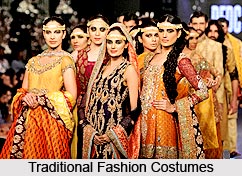 The modern day Indian fashion designer is in his own space, experimenting with his traditions and fusing the rich heritage of crafts and weaves to contemporary silhouettes, and getting noticed on the runways in Milan, Berlin, Paris, London and New York.
The modern day Indian fashion designer is in his own space, experimenting with his traditions and fusing the rich heritage of crafts and weaves to contemporary silhouettes, and getting noticed on the runways in Milan, Berlin, Paris, London and New York.
The only thing constant about Fashion is Change` said Oscar Wilde. As times revolutionize, ages modify so does fashion approach in the modern world. To be able to sustain, one has to change with the times. The Ancient civilization of India has constantly changed and adapted itself to the times, and thus is alive and kicking even after so many eons. Indian fashion has been classic for most part of time, Indians are not true believers in FADS, more often than not Indian fashion has been characterized by western influences throughout history or has been influenced due to rulers and foreigners wearing clothes that were different from the traditional. In spite of changing sensibilities of fashion, the Indian textile crafts have always immerged winners. `India lives in its villages` said Mahatma Gandhi, more than 6 decades ago, and the statement have not lost its validity.
